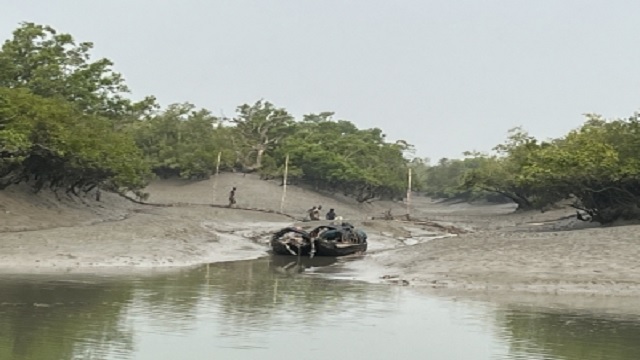Sunderbans women show how mangroves reduce impact of cyclones
Sunderbans women show the world as to how mangroves reduce the impact of cyclones in India, read on to find out more
Sunderbans women show the world as to how mangroves reduce the impact of cyclones in India, read on to find out more. At a time when West Bengal is hitting the national headlines for all the wrong reasons, there is at least one area where the state has been acclaimed nationally as a model. And that area is minimizing the impact of increasingly frequent and untimely cyclonic storms in coastal areas.
Besides being accepted as the national model for systematic and scientific mangrove plantation to reduce the impact of cyclonic storms on coastlines, this project adopted in Sunderbans area scattered over the South 24 Parganas and North 24 Parganas districts of West Bengal has also become an exemplary example of women empowerment.
In July this year, the ‘Sunderbans model’ was accepted nationally by the Union Government as an Rs 200 crore project named ‘Mishti.’ Now, extensive and systematic mangrove plantation will be done on the Indian coastline right from Gujarat to Odisha to minimise the impact of cyclonic storms.
At the same time, the spirit of women empowerment that was adopted in the ‘Sunderbans model’ is also being replicated in the national model of ‘Mishti’ where women-dominated Self-Help Groups (SHGs) will be entrusted with the task of plantation and maintenance of mangroves along the coastlines.
Encouragingly, six coastal states namely Maharashtra, Karnataka, Gujarat, Odisha, Tamil Nadu and Kerala individually approached the West Bengal forest department by the end of last year to purchase nine varieties of mangrove seeds for their states.
A team of experts from West Bengal also visited these six coastal states to train their counterparts there on the plantation, nurturing and maintenance of the mangrove saplings.
According to experts, the speciality of the mangrove plantation are the stilt roots that develop from the stem nodes and join the soil substratum, hence providing mechanical support even to weaker stems. That is why the mangroves are in a better position to bear the impact of cyclonic storms and don’t get easily uprooted.
Though the West Bengal Government and the ruling Trinamool Congress have taken the credit for the ‘Sunderbans model’ being adopted nationally, however, the beneficiaries give the real credit to a group of environmental activists.
The protectionists, under the aegis of the Nature Environment & Wildlife Society (NEWS) started a mission in 2007 to achieve permanent and concrete protection from the ravages of cyclones.
The initiative started under the banner of ‘Project Green warriors’ involved women from three villages in the Sunderbans area in South 25 Parganas, namely Dulki-Sonagaon, Amlamethi and Mathurakhand.
Before the beginning of the project, although the state forest department practiced mangrove forestation in July every year, nothing remained by winter since the plantation was monoculture in nature.
Lack of monitoring was also a reason for the quick wiping out of the plantation undertaken by the state forest department before 2007.
However, after ‘Project Green Warriors’ started in West Bengal involving 150 village women, there was a change in the approach towards systematic mangrove plantation as a long-term resistance tool against cyclonic storms.
The volunteers of NEWS along with the 150 SHG women started educating the local people to avoid certain practices like cattle grazing in the mangrove plantations or fishing net-dragging that were uprooting the plants and leading to soil erosion. This extensive and parallel exercise resulted in a good yield between 2008 and 2009.
The mangroves reduce impact of cyclones said the reports of the project on Sunderbans was felt in May 2009 during Cyclone Aila. Its tail touched Sunderbans before it moved on to Bangladesh. While the rest of the Sunderbans was severely affected by Cyclone Aila, the patches of land where the mangrove forestation was done under the project was absolutely untouched.
That was an eye-opener for everyone, and NEWS started mobilising funds, doing risk-mapping and between 2010 and 2015 over 18,000 local women were involved in the project.
Over 4,600 hectares of land scattered over 183 villages in 14 community development blocks in the Sunderbans areas was brought under large-scale mangrove forestation.
Later, mangrove plantation was also included in the 100-day job project under the Mahatma Gandhi National Rural Employment Guarantee Act, ensuring that the protection of the coastlines continued unabated.





 Ms Kalinga
Ms Kalinga